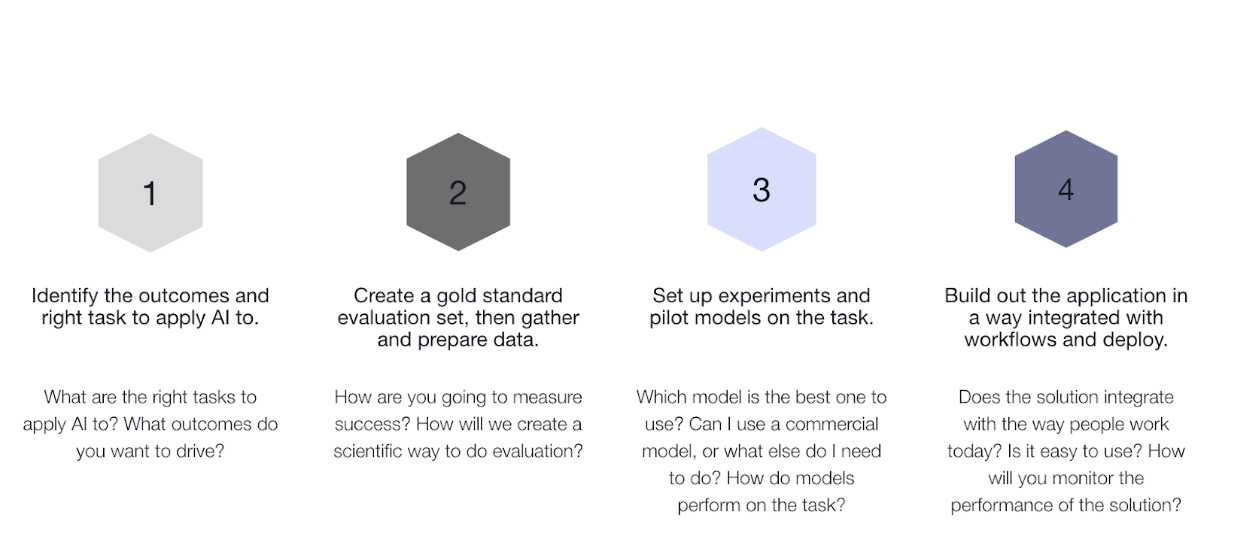Step 1: Choosing The Right Use Case For AI
This is an excerpt from the “Ready to Experiment with AI? A Guide for Getting Started”, which outlines a clear, four-step methodology to help you begin experimenting with AI more systematically and find useful applications. If you are a business leader, a life sciences professional, or an engineer who is just getting into the AI world - this guide is for you.
The 4-Step Methodology for AI Experimentation
Identify Outcomes & Tasks: Determine the goals you want to achieve and the specific tasks where AI might help.
Create a Gold Standard & Gather Data: Establish how you'll measure success and collect the necessary data.
Experiment & Pilot: Test different AI models on your chosen task.
Build & Deploy: Integrate the successful AI solution into workflows. You can complete steps 1-3 without engineering.
Let's dive into step 1.
Step 1: Identify the Right Outcomes and Tasks
The key is to focus your efforts. Start by thinking about your team's current workflows:
Are there repetitive tasks?
Do any tasks involve unstructured data (like text, images, audio)? What kind of data is involved, and do I have enough?
Could automating or speeding up a task free up time for more creative or strategic work?
Is the task well-understood? Do you know what defines success and what constitutes a good, better, or bad outcome?
For instance, let’s imagine that your role is as a clinical research coordinator (CRC). Here’s how to go through the four questions listed above:
Are there repetitive tasks?
For a CRC, your daily tasks may be managing the day-to-day operations at a trial site, recruiting and monitoring participants, and documenting case report forms and data sources. Here are some of the tasks a CRC may fulfill (taken from a current job posting):
Develop and maintain procedures for conducting decentralized clinical studies
Maintain and set up instrumentation to collect data
Obtain consent from study participants according to protocol
Provide feedback to research team to improve study procedures
Out of the tasks listed above, documenting procedures, setting up instrumentation to collect data, and obtaining consent from study participants appear to be the most repetitive of tasks. For the purpose of this example, we will move forward with the task of obtaining consent from study participants.
Do any tasks involve unstructured data (like text, images, audio)? What kind of data is involved, and do I have enough?
In the task of obtaining consent from study participants, there will likely be both structured and unstructured data. Some of the structured data is the study name, study location, participant name and date. The participant’s signature would be unstructured data, as it is handwritten…
The rest of the guide will be available to newsletter subscribers. Register here for more insights: Hubspot Link
Interested in finding the right use case in person? We are hosting a workshop for those in the Bay Area on May 22nd.
RSVP here: https://lu.ma/na23a7hl. Spots are limited.
